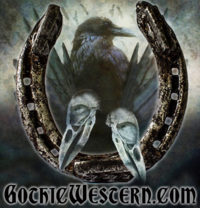With Near Dark, Kathryn Bigelow wanted to film a Dark Western movie that departed from cinematic convention. When she and co-writer Eric Red found financial backing for a Western difficult to obtain, it was suggested to them that they try mixing a Western with another, more popular genre. Her interest in revisionist interpretation of cinematic tradition led her and Red to combine two genres that they regarded as ripe for reinterpretation: the Western movie and the vampire movie. The combination of the genres had been visited at least twice before on the big screen, with Curse of the Undead (1959) and Billy the Kid Versus Dracula (1966).
Cowboy Caleb Colton (Adrian Pasdar) meets gorgeous Mae (Jenny Wright) at a bar, and the two have an immediate attraction. But when Mae turns out to be a vampire and bites Caleb on the neck, their relationship gets complicated. Wracked with a craving for human blood, Caleb is forced to leave his family and ride with Mae and her gang of vampires, including the evil Severen. Along the way Caleb must decide between his new love of Mae and the love of his family.
Part of a late 1980s revival of serious vampire depictions on the big screen, it received mostly positive reviews for its mix of the Western, biker and vampire movie genres.
In her review for The New York Times, Caryn James wrote, “Ms. Bigelow’s too-studied compositions – Caleb in silhouette riding a horse toward the camera – clash with her unstudied approach to the characters’ looks”. Jonathan Rosenbaum of the Chicago Reader was impressed by Bigelow’s first foray into big budget films with the “hillbilly vampire” movie, describing it as “beautifully shot”. Hal Hinson of The Washington Post said the intermixing of vampire legends, a Dark Western movie and biker movies has a result that is “both outrageous and poetic; it has extravagant, bloody thrills plus something else – something that comes close to genuine emotion”. In his review for The Globe and Mail, Jay Scott wrote, “Bill Paxton as the undead sex symbol – is exceptional, but not exceptional enough to put across the cop-out that concludes the film”.




